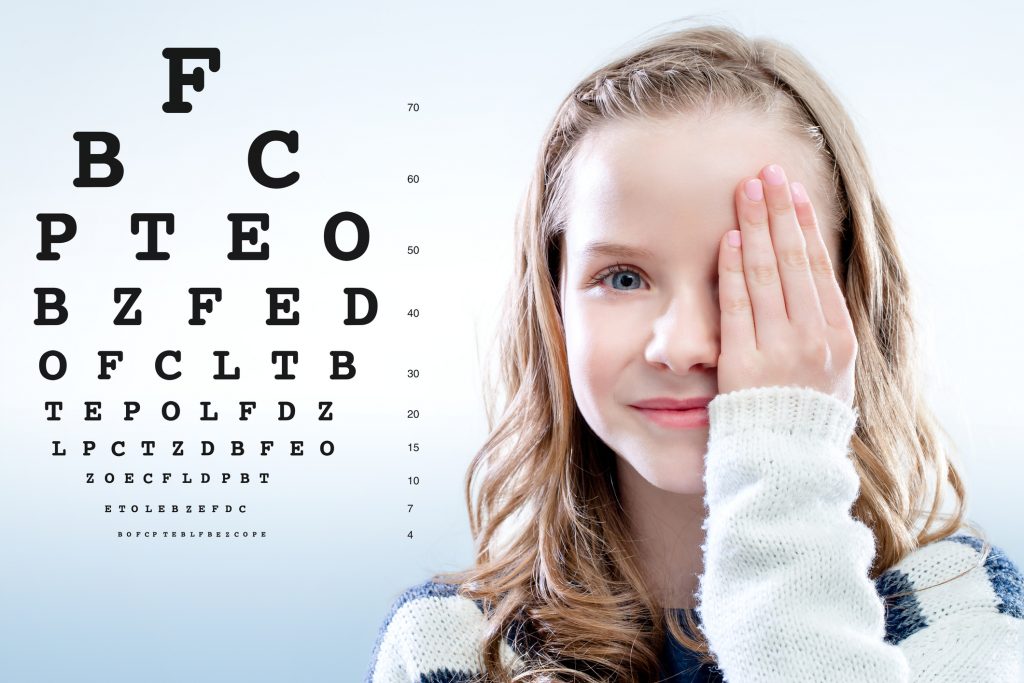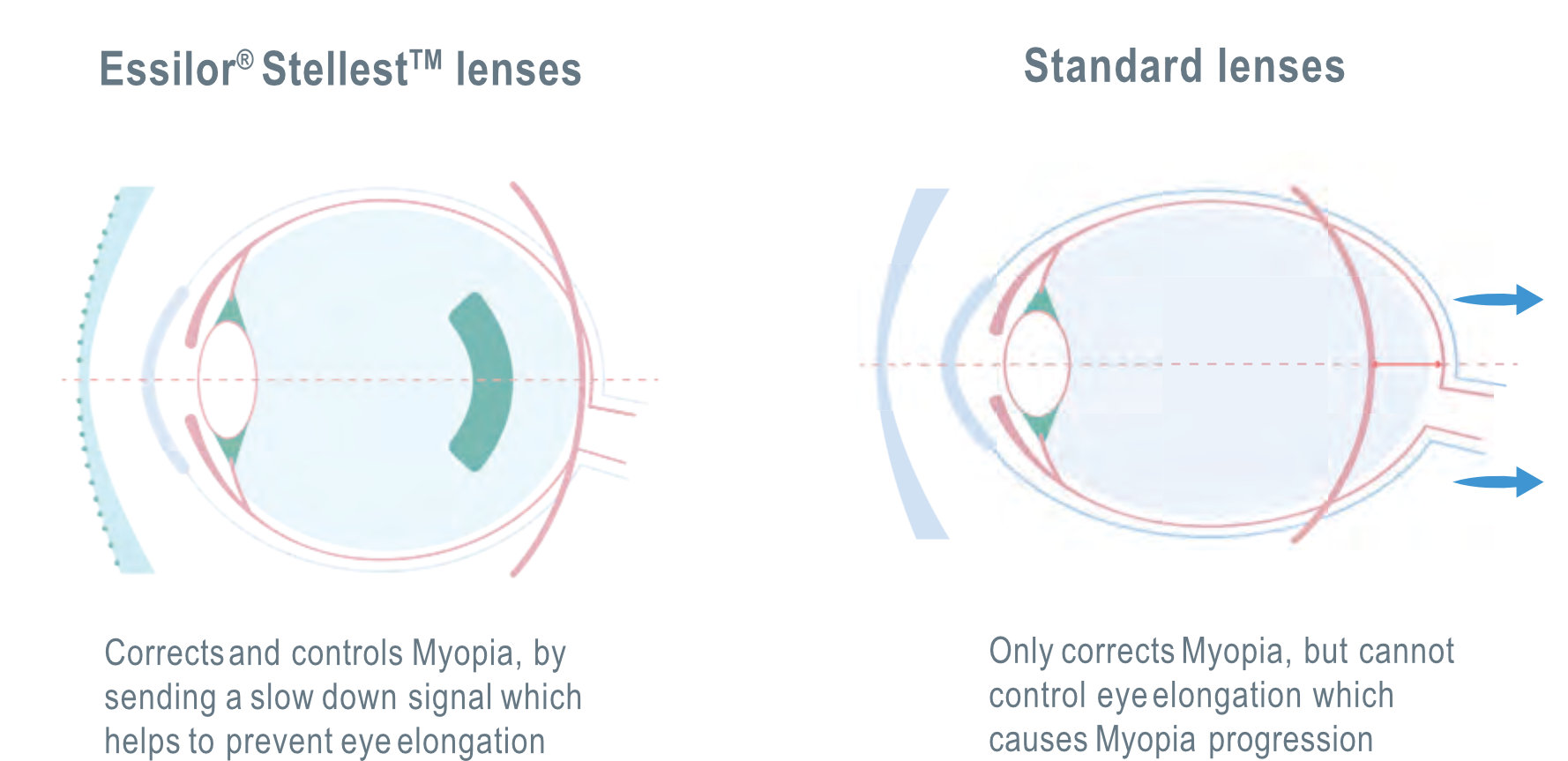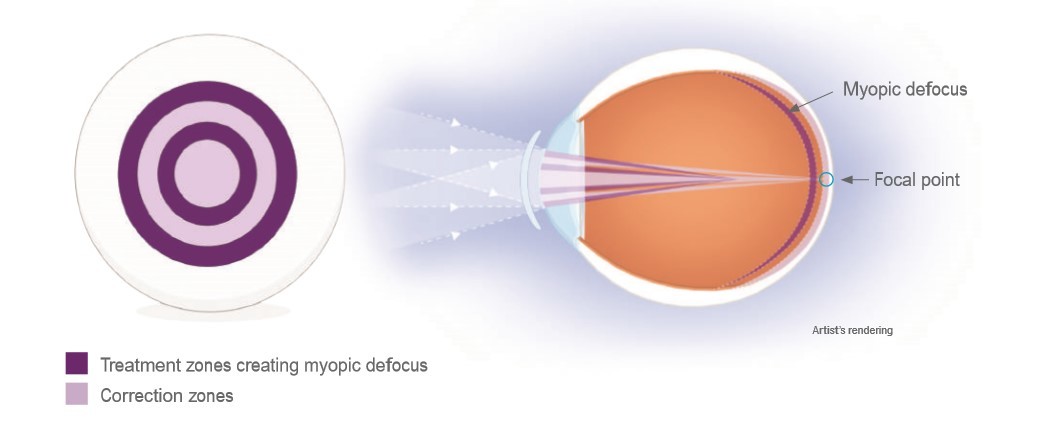Blog, News & Offers
Myopia Management, What is it and how does it work?
Posted on Tuesday, August 2, 2022



Research on Myopia management has been dubbed as the most significant clinical findings in the world of optics for generations. The prevalence of myopia is projected to increase from approximately two billion people worldwide in 2010 to almost five billion people in 2050, bringing with it immediate and long-term health challenges. In fact, the proportion of young people with myopia in the UK has more than doubled over the last 50 years, in those aged between 10–16 years and children are becoming myopic at a younger age. What was a trend we within the profession had noticed and asked; "why are we seeing so many more kids who are short sighted" we now have answers for. So please, if you are a parent, guardian, grandparent, aunty, uncle, godparent please take the time to read this article and pass the information on.
First things first.
What is myopia?
Myopia is another word for short-sightedness. If your child is myopic, this is usually because their eyes are either longer (front-to-back), or more powerful than most eyes. This means that light focuses in front of the retina (at the back of the eye) rather than focussing clearly onto the retina. This will make distance vision blurred and spectacles, contact lenses or refractive surgery is needed to produce clear distance vision. Myopes usually have good near vision and do not need any help from spectacles or contact lenses to see clearly close-up.
Who is affected?
Around 1 in every 3 people in the UK are myopic and the number is rising year on year. The condition usually begins in childhood (6-13 years) and tends to worsen until the eye has stopped growing, usually in the late teens or early twenties. In the UK, the number of myopic children aged between 10-16 years has more than doubled over the last 50 years, and children are starting to become myopic at a younger age. The problem is, the younger the child is when they become myopic, the greater the final level of myopia is likely to be and becoming myopic before the age of 9 increases the risk of high myopia (>6.00D).
So why is it a problem being Myopic?
Spectacles and contact lenses (or laser surgery for adults), will enable myopic eyes to see clearly, these come in minus power form. In higher levels of Myopia, more advanced lenses are required to see clearly and yes they are more expensive, even with the best lens forms the image produced by lenses cannot reach the higher levels of sight someone with less power may achieve. But this isn't the main problem with myopia. Sadly, just being myopic means you are more likely to suffer from a serious visual condition later in life. If a person has a high level of myopia, they will be at a greater risk of developing these serious sight threatening conditions later in life such as retinal detachment, glaucoma and macular degeneration.
Just being myopic means you are 2-3x more likely to develop Glaucoma, Retinal detachment and/or Myopic maculopathy later in life. The risk accelerates the more myopic you become. -5.00 to -7.00 and your risk of retinal detachment increases to 21x and maculopathy 40x. And worse still when over -7.00 retinal detachment is 44x more a risk and maculopathy 126x more likely to effect that person.
What this really tells us is that when we are thinking about adult complications connected to myopia , ANY amount of increase in myopia counts, so every amount prevented also counts. And that's important, because we can now slow the progression of myopia through Myopia Management.
What causes Myopia?
Research shows that any of the following increase the likelihood of a child becoming myopic:
• Having one or both parents with myopia.
• Spending limited time outdoors.
• Spending excessive time on near object tasks.
Time spent outdoors and time on near objects are factors that until last year were only theory's. We noticed that kids were spending more time on phones, tablets and computers and we were seeing higher levels of short sightedness SO now we have proof of this link, we can do something about it.
Can I reduce the progression of my child’s myopia?
Trying to slow the progression of myopia is called myopia management. A number of methods have been developed for myopia management Firstly you may read into myopia management some more and see the use of eye drops being discussed. Atropine has been found to be helpful, but use is not licenced in the UK.
Currently the best results for available methods in the UK are found when specially developed contact lenses or spectacle lenses are used (or ideally a mixture of both), with research showing between 40-60% reduction in myopia progression after 1-2 years of use and the manufacturer’s results showing better results still over a longer period of time.
The purpose of myopia management is that a child will grow up with a lower level of myopia than they would have had without treatment. This means:
• Being less myopic will reduce their chances of developing adult sight threatening conditions.
• Not depending on their glasses as much as they would if the progression was more severe.
• Spectacle lens powers needed in adulthood being lower, meaning thinner, lighter and leave you with more lens options to choose between.
• The vision achieved with spectacles may be better, as high myopes, even with the best spectacle correction, may have reduced vision as the image seen is smaller.
What are the treatment options?
Changes in lifestyle:
At the very least, if your child is already myopic or scores as a high risk on the calculations, you should:
• Encourage them to spend more time/play outdoors.90 minutes a day is optimal.
• Limit screen time, 30 mins then a break.
• Hold/sit them further away from screens 30cm away and further the better.
• Remove spectacles when doing near activities.
All of these changes will reduce the amount of focussing effort and muscle contraction in the eyes and help in slowing myopia progression by 0.25D every 2 years.
Spectacle lenses
There are 2 lens types currently available which help slow the progression of myopia:
• H.A.L.T (High aspheric lenslet technology) by Essilor called Stellest(tm)
• D.I.M.S (Defocus Incorporated Multiple Segments) lens technology by Hoya called Miyosmart(tm)
Contact lenses
• Soft daily disposable lenses which have been designed to change the focus of light in peripheral vision such as Cooper vision MiSight.
How both the contact lens and the spectacle lens work is complicated but what recent research has proven is the reason why a myopic eye continues to grown is because standard corrective spectacle or contact lenses focus light perfectly on one part of the retina leaving the majority of the peripheral retina out of focus. As a large proportion of the retina is out of focus the eye grows to become in focus elsewhere on the retina but once again out of focus on the most sensitive part we do most of our visual processing from and we therefore correct to using spectacle correction.
Both the specialised lens and contact lens have a central are of focus for this one part of the eye as well as rings of differing power for the peripheral retina. Some of the pictures above show how they work.
By using one of these options it has been clinically proven to slow progression of myopia by over 60%
. This means that if fitted early enough with this lens, most children will end up with less than half the strength of myopia than if fitted with a conventional contact lens or spectacles.
This means when considering the risks discussed earlier, treatment can significantly reduce the risk of a child developing sight threatening conditions in the future.
Although myopia management may reduce the risk of your child developing myopia related sight loss in adulthood, it does not take the risk away altogether, simply makes it less likely.
Only after a full generation of research will we know if myopia management is cost effective in reducing sight threatening conditions, but the current evidence is overwhelming. You just cannot say for sure until after a whole generation of data goes through research. All we know at the moment is myopia is linked to sight threatening pathology and these treatments lower the progression of myopia.
Sadly for now these treatments are not funded by NHS. Lifestyle advice is free, please take it on board. I think we all know a child with a tablet, a teenager with a mobile phone and another with a games console. Look how close they get to it, compare that to how close a generation before read books and games consoles on monitors instead of TV's you can sit back from. Its much closer meaning much more strain on the eye and for longer in a day.
If you would like to find out more, please contact your local practice. We have Opticians trained in understanding Myopia management at every practice who will be happy to help.
Blog Search
Blog Categories
- News & Offers (50)
Blog Archives
- August2023 (1)
- April2023 (1)
- November2022 (1)
- October2022 (2)
- September2022 (1)
- August2022 (3)
- June2022 (3)
- May2022 (3)
- March2022 (3)
- December2021 (2)
- November2021 (1)
- June2021 (1)
- May2021 (1)
- April2021 (2)
- March2021 (2)
- February2021 (4)
- January2021 (1)
- December2020 (1)
- November2020 (2)
- October2020 (1)
- September2020 (3)
- July2020 (1)
- April2020 (2)
- March2020 (2)
- October2019 (1)
- July2019 (2)
- June2019 (1)
- February2019 (1)
- January2019 (1)